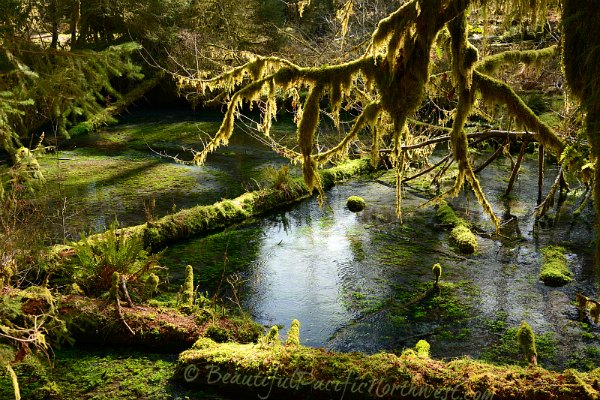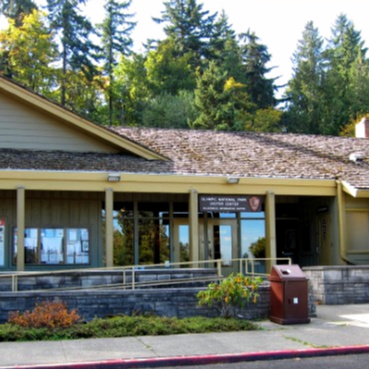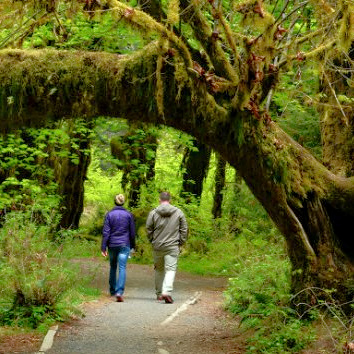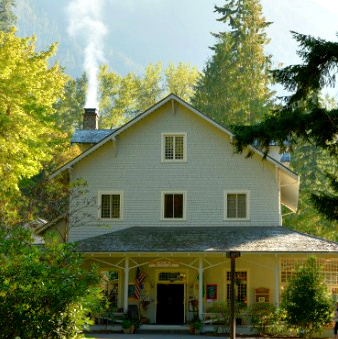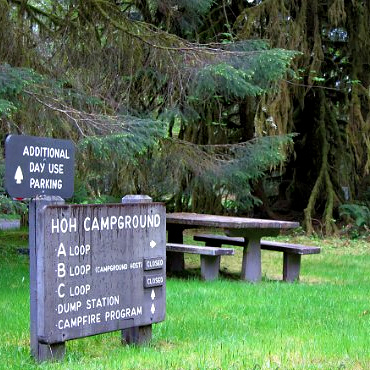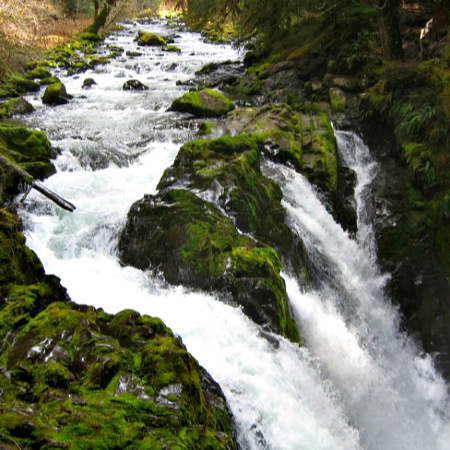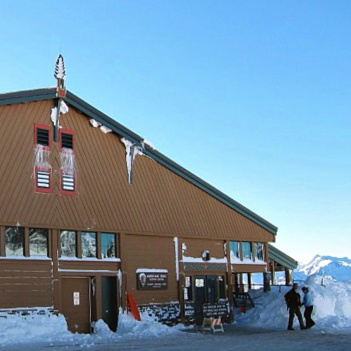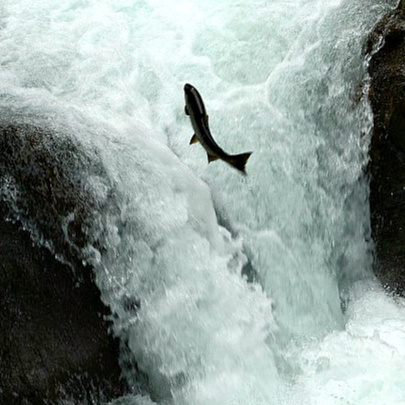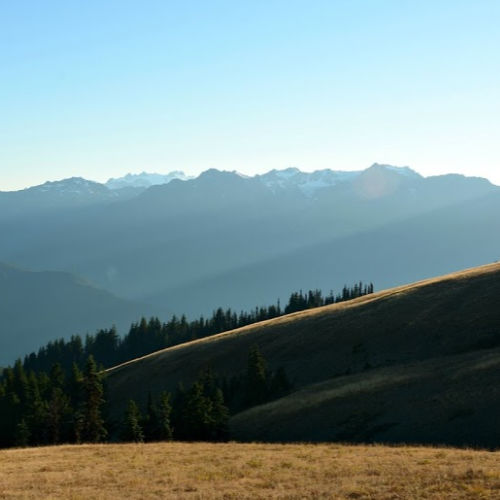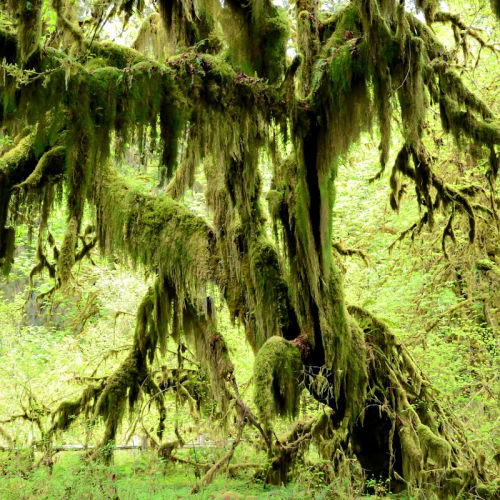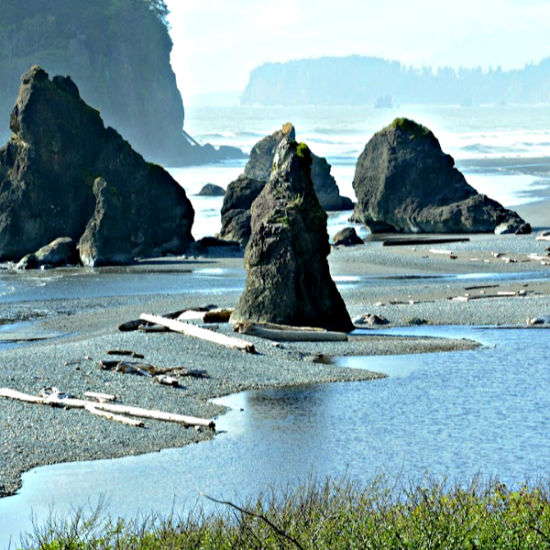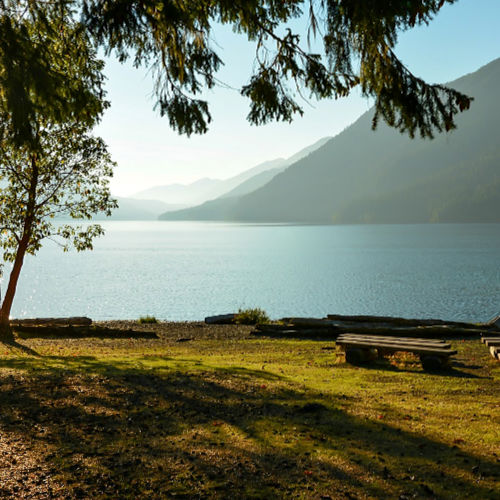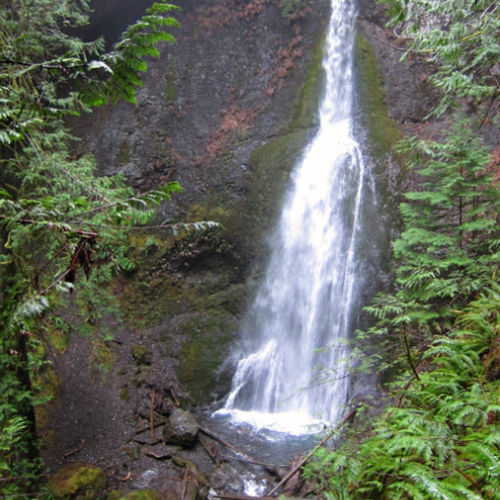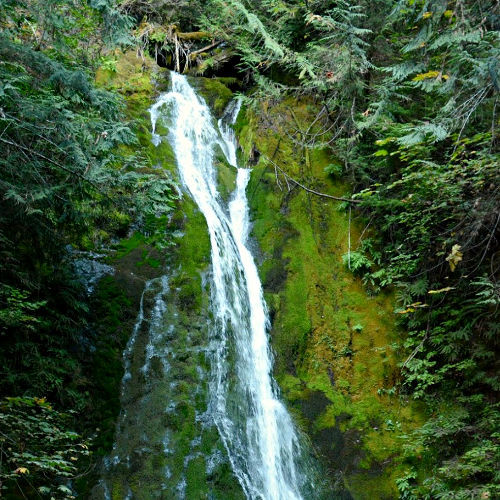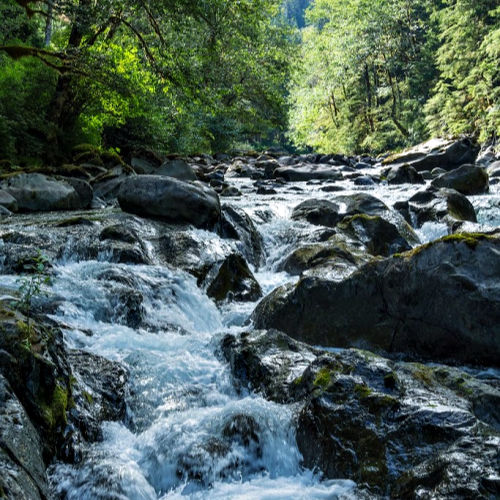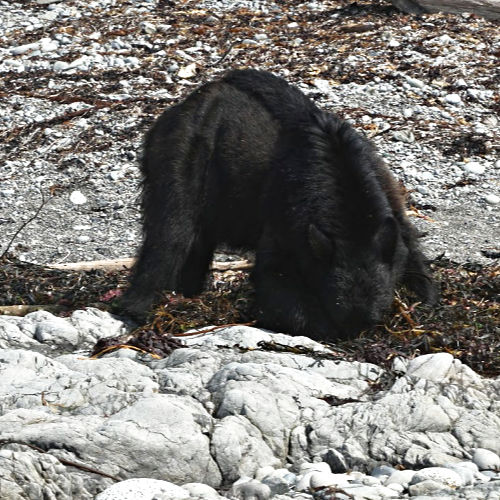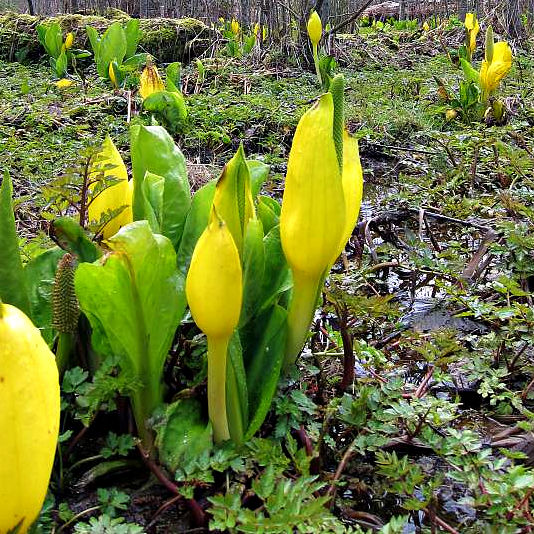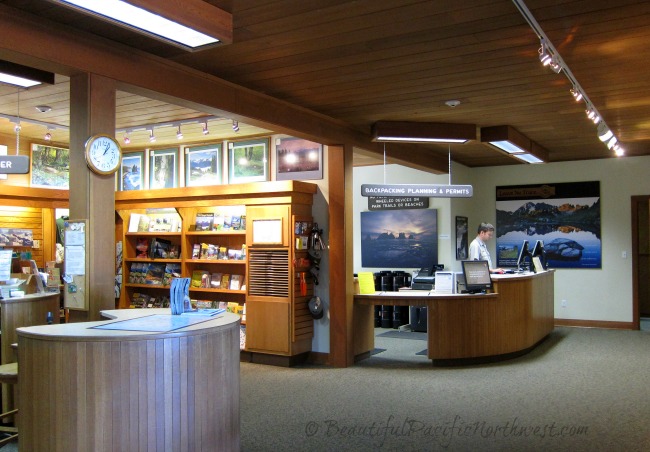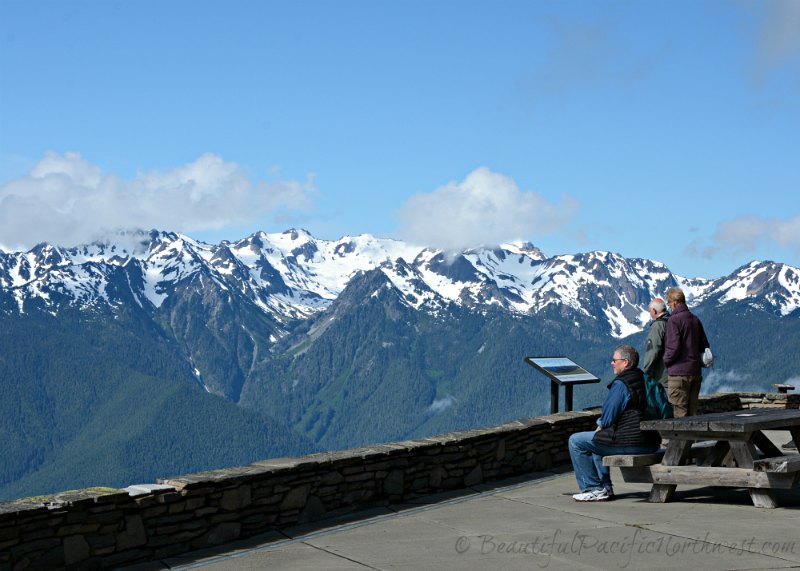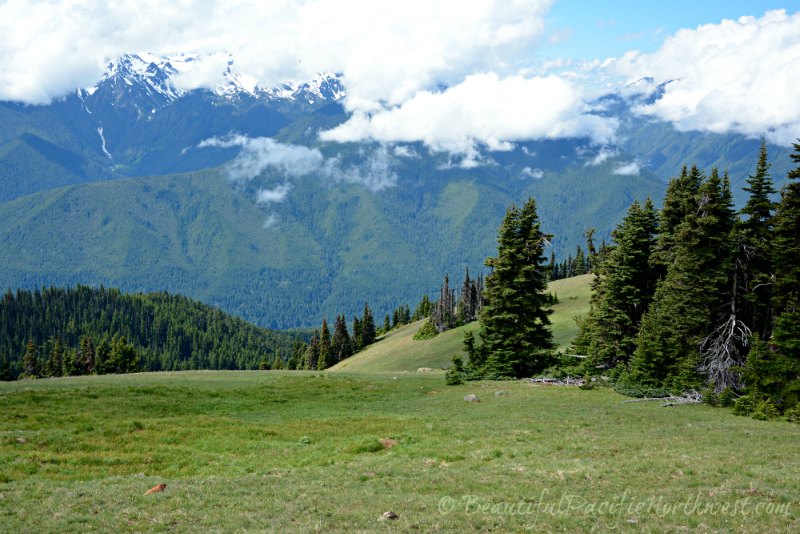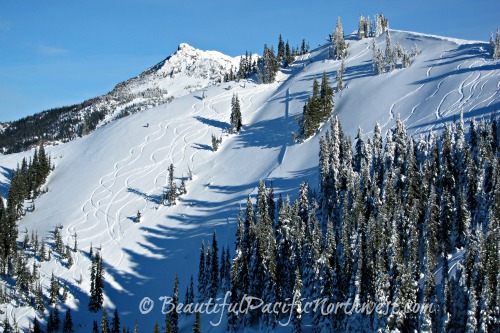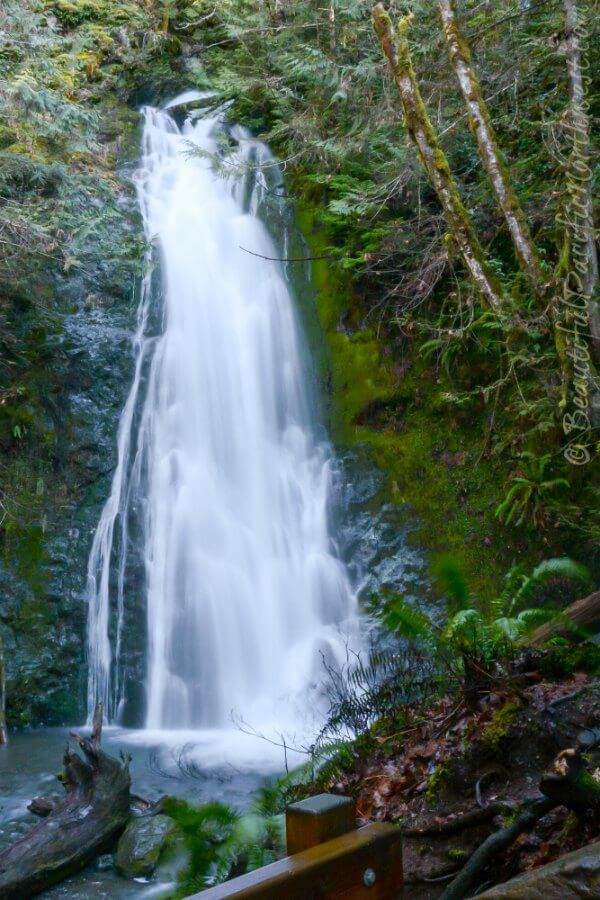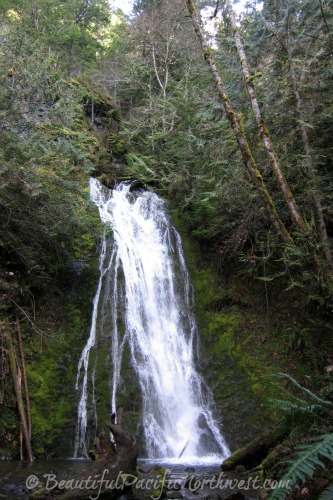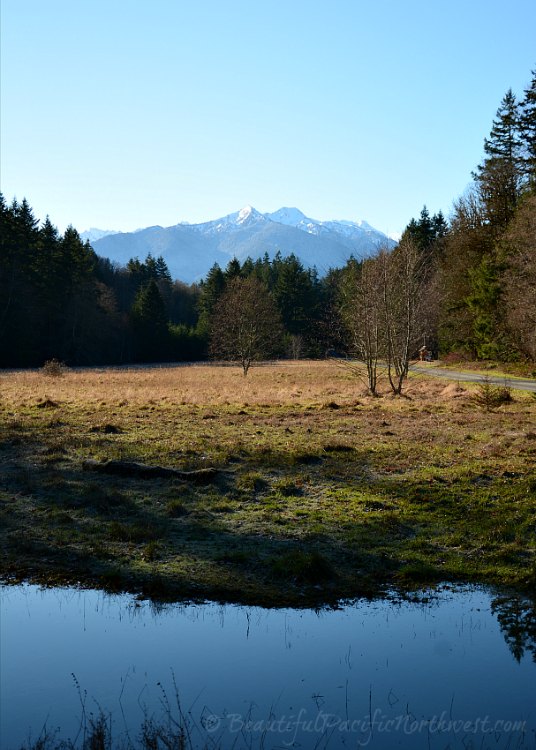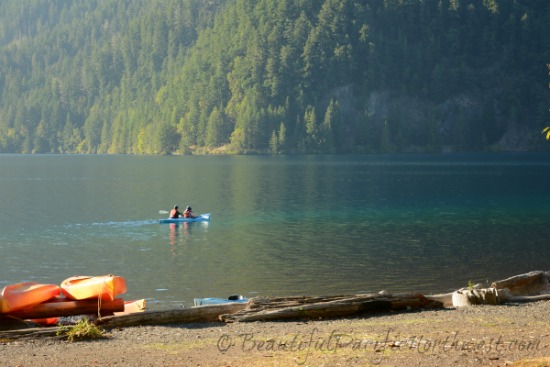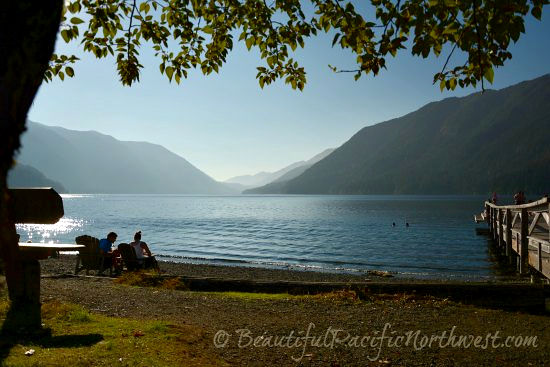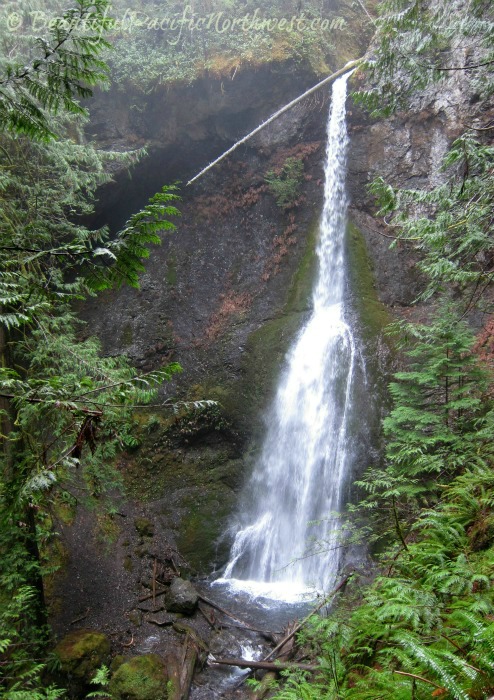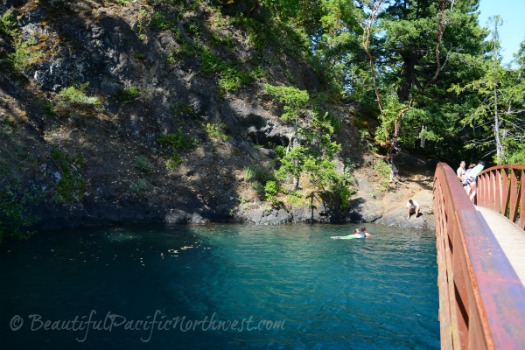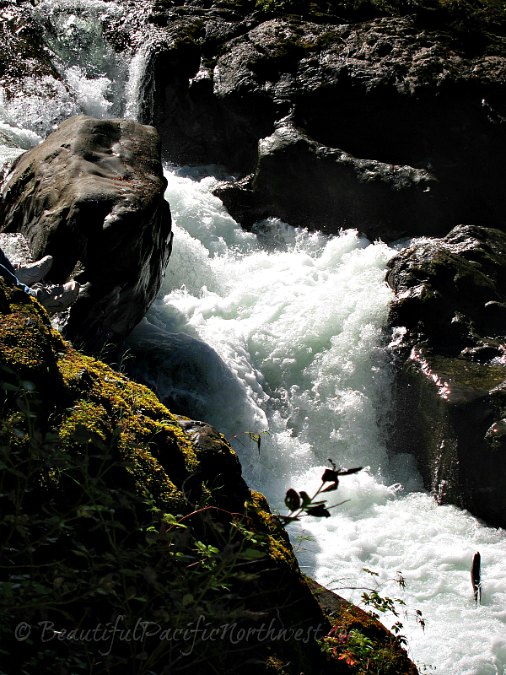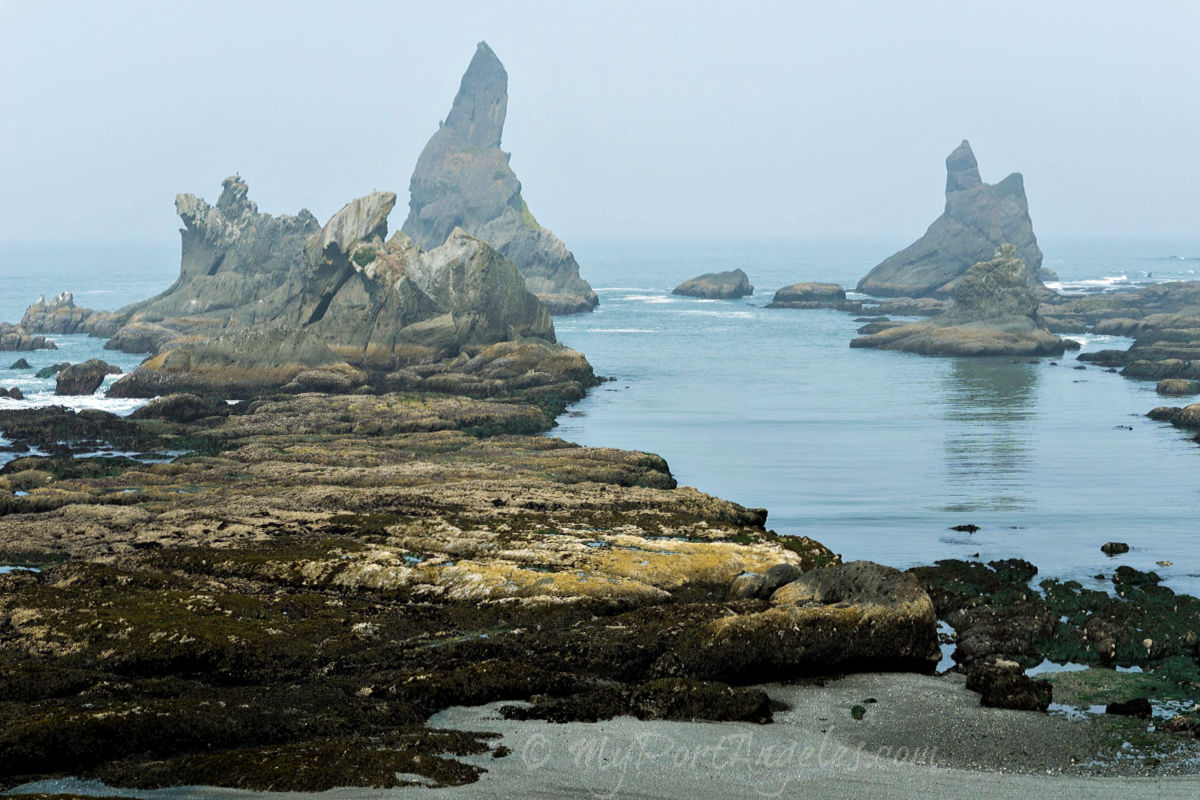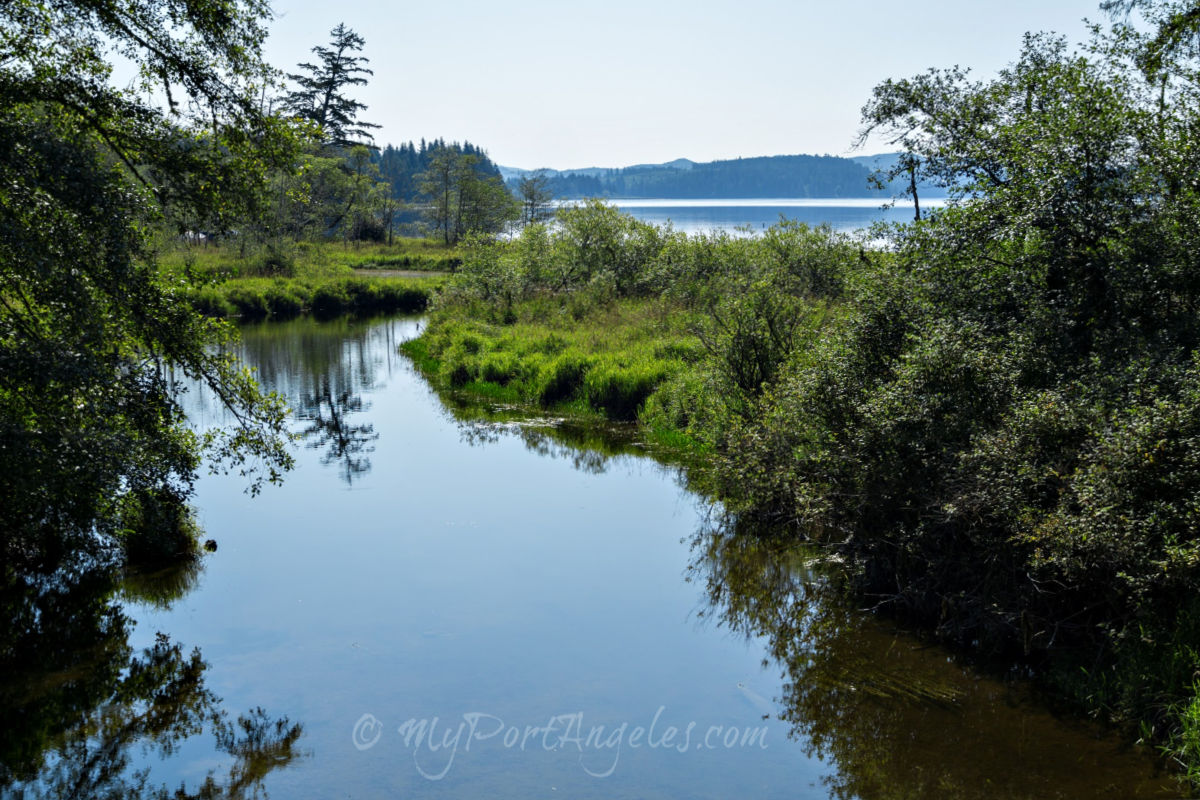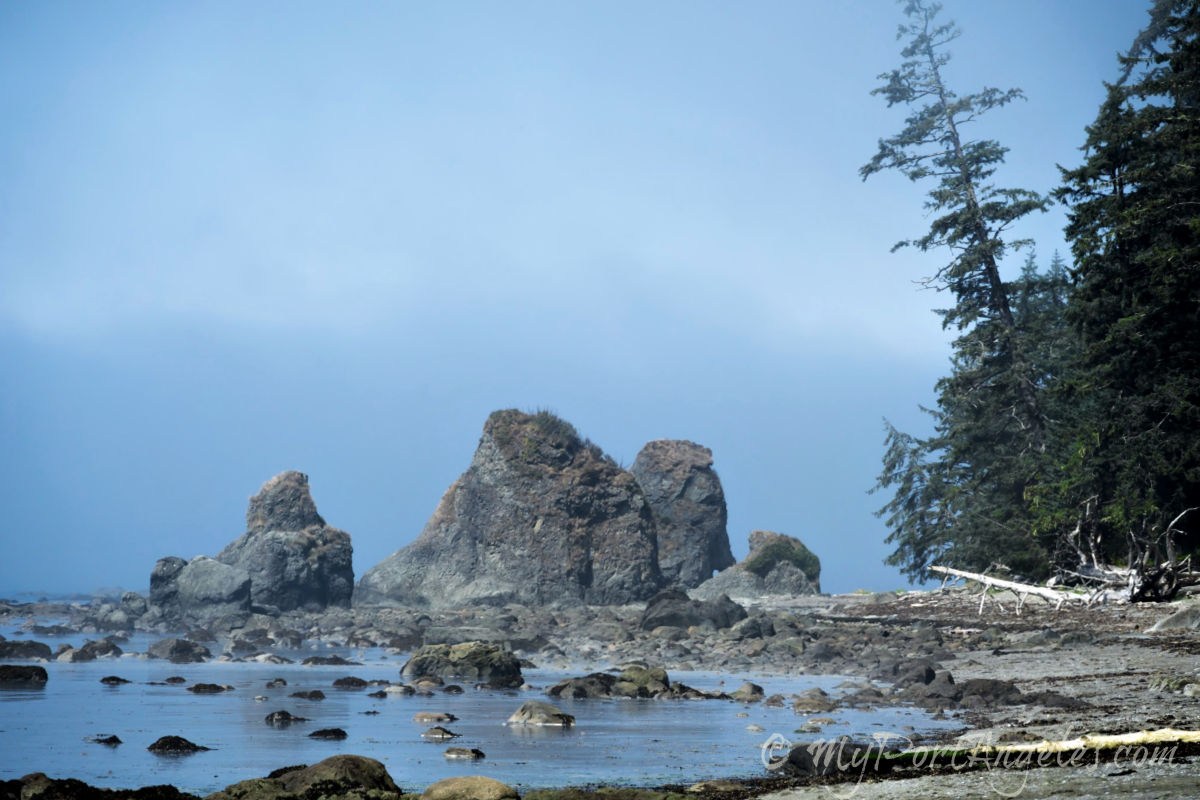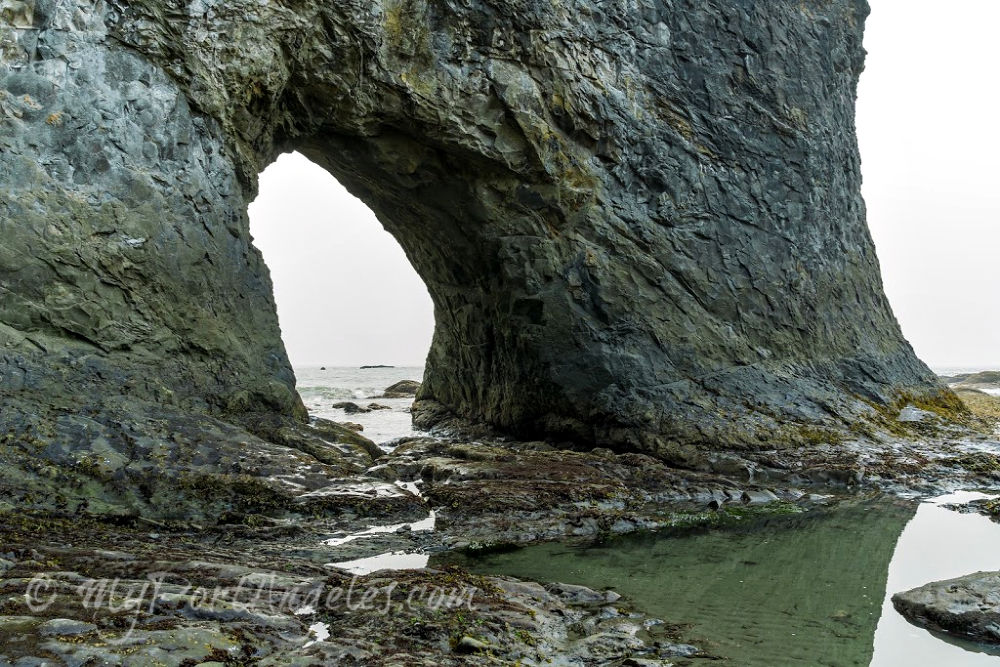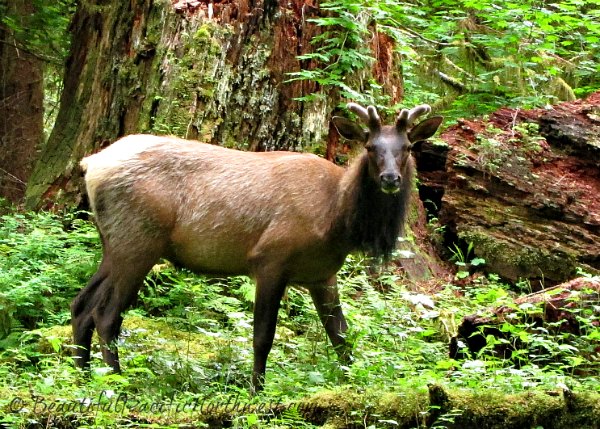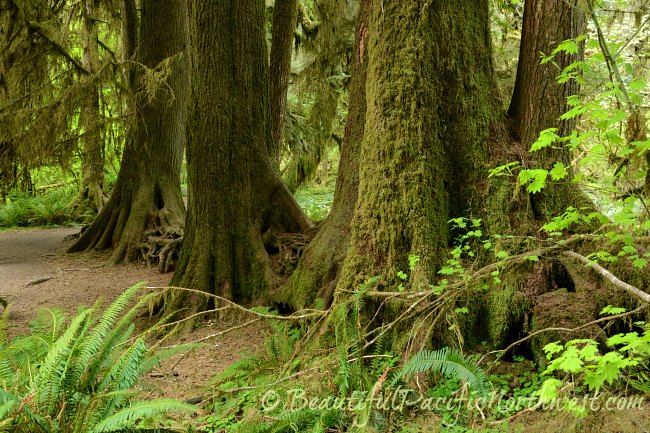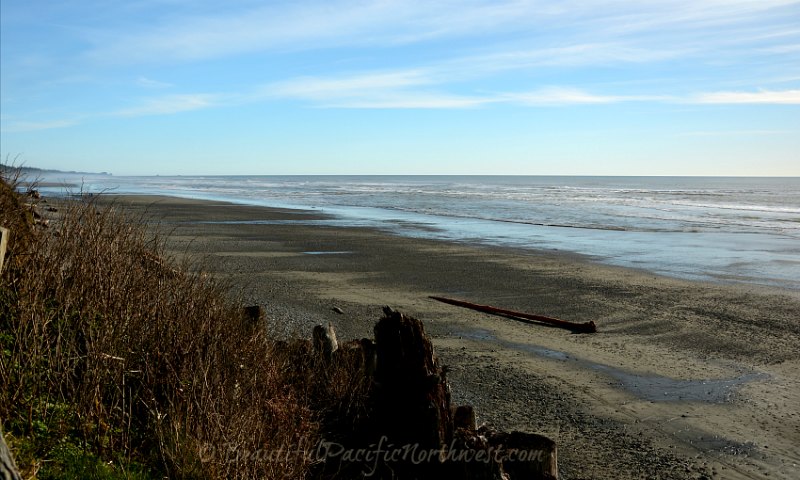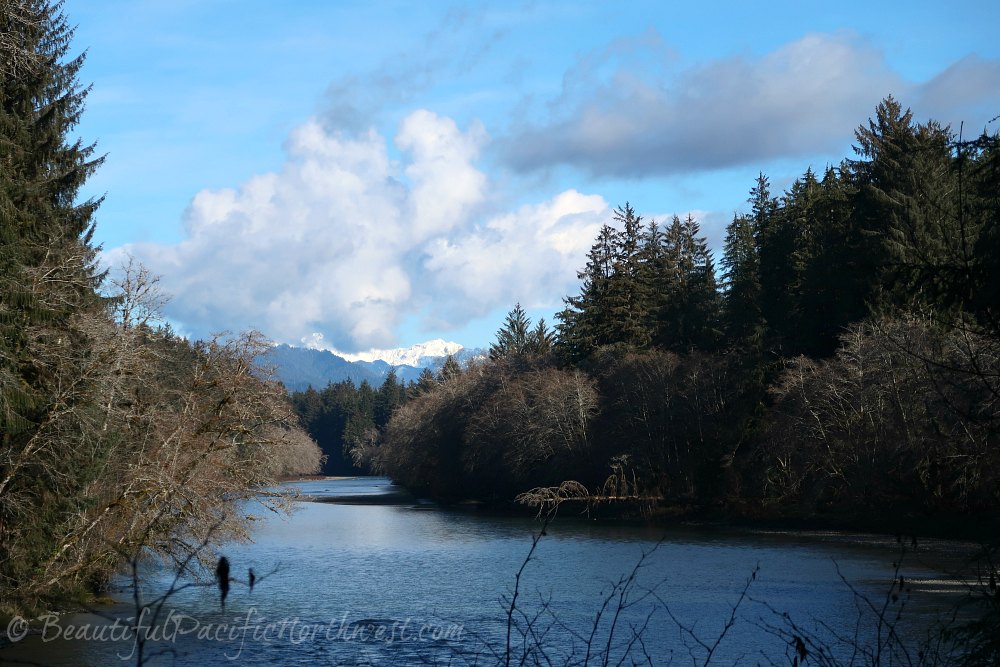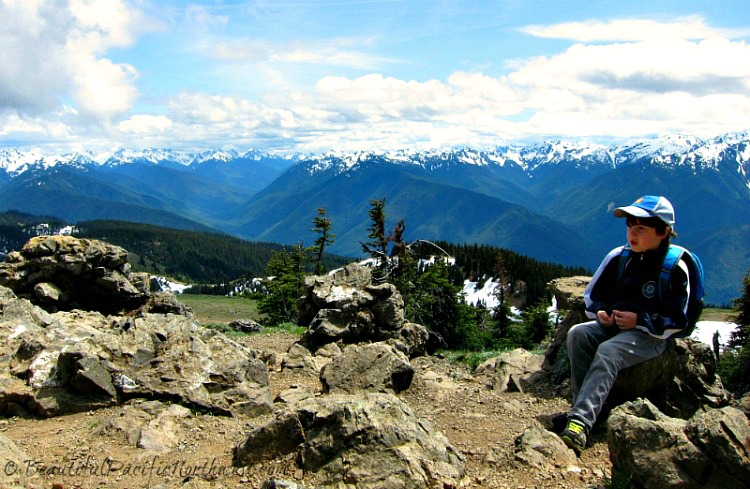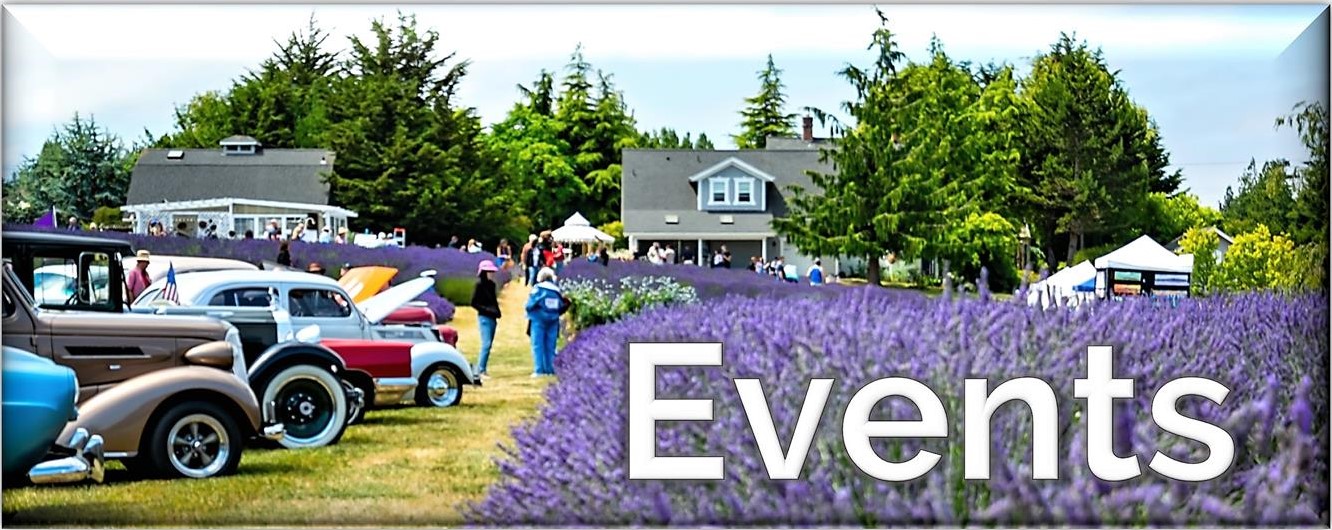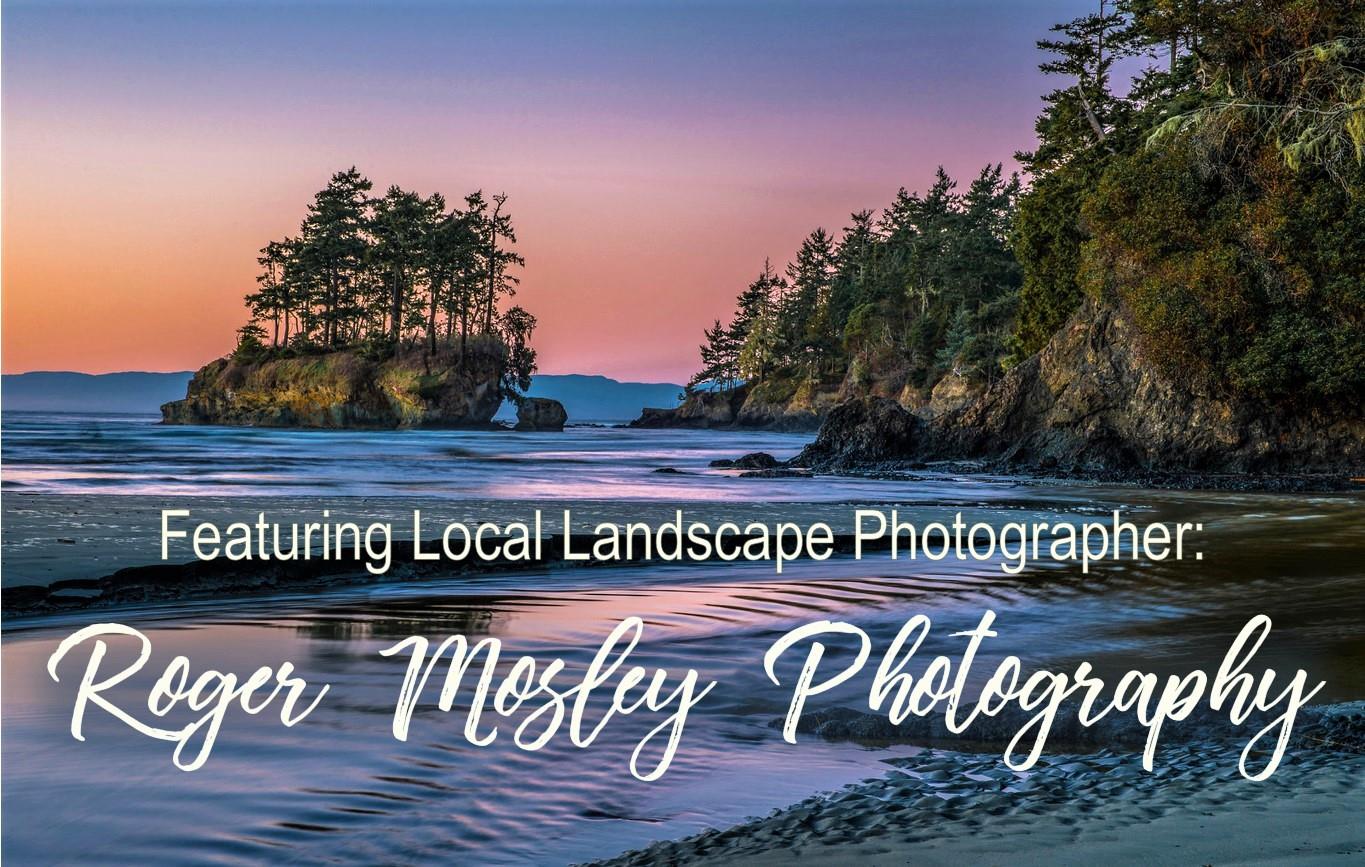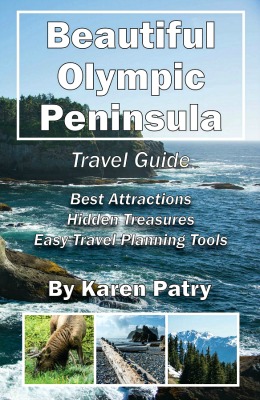Olympic National Park
Olympic National Park is a hugely popular destination. It is situated on the Olympic Peninsula with headquarters in Port Angeles in the Pacific Northwest. Discover attractions, inspirations, activities, both rugged and genteel, for every person in each season.
If ever there was a Do-Not-Miss experience, the Olympic Nat'l Park is it.
Occupying 1,442 square miles of the 3,600 square mile Olympic Peninsula in Washington State, the park embraces a vast area of pristine wilderness, from mountain crags and glaciers, to unique temperate rain forest, to Washington State's rugged Pacific coastline.
The Olympic National Park offers
14 Different Regions
The Park is HUGE! The massive and diverse Olympic National Park offers fourteen different destinations around which are centered the major Park attractions. A good number of these are completely FREE - no entry fees needed.
Starting with the ONP Headquarters in Port Angeles, WA, and navigating the Olympic Peninsula in a counterclockwise fashion, here is our list of these 14 regions, a brief overview of what you can find at each area, and links to plenty of additional information.
Please be sure to allow sufficient time to enjoy all they have to offer!
- Port Angeles - Olympic National Park HQ and Visitor Center, Hurricane Ridge
- Elwha Valley - Madison Creek Falls, Goblin Gate, Glines Dam Overlook, Olympic Hot Springs, Hume Homestead, more
- Lake Crescent - Lake activities, Storm King Ranger Station, Marymere Falls, Barnes Creek Trail, Storm King Summit Trail, East Beach, Spruce Railroad Trail, Devil's Punchbowl, Pyramid Peak Trail
- Sol Duc Valley - Salmon Cascades, Ancient Grove, Sol Duc Hot Springs Resort, Sol Duc Falls, Lover's Lane Trail, trails to Mink Lake and Deer Lake and beyond
- Shi Shi Beach - Point of the Arches
- Ozette Lake - Ranger Station, Camping, Boating, 9-mile Triangle Trail
- Beaches near La Push, WA - Rialto Beach, Second Beach, Third Beach
- Hoh Rain Forest - Visitor Center, hikes for all skill levels, rain forest biome
- Kalaloch Beaches - Ruby Beach, Beach 4, Beach 3, Kalaloch Beach, Beach 2, Beach 1, South Beach
- Queets Rain Forest - Queets River access, Sam's Loop Trail
- Quinault Rain Forest - Giant trees, rain forest hikes, Quinault loop drive
- Staircase - Hiking, high country trails, Ranger Station
- Dosewallips - Ranger Station, campground, high country trails
- Deer Park - Campground and high country trails
Olympic National Park Washington - Why this is a Must-See Park
Olympic National Park (ONP) Quick Links:
Jump to your main area of interest by clicking on any of the following buttons, or scroll below for overviews of the fourteen regions within this massive Park.
Olympic National Park is Headquartered in Port Angeles
The Olympic National Park is headquartered in Port Angeles, and is a main tourist attraction for Port Angeles visitors. In fact, as far as total visits to all National Parks in the United States go, the Olympic National Park consistently ranks around #5 or #6 most visited National Park. Over the last 11 years ending in 2018, an average of 3.12 million visitors per year enjoyed the beauty and the awe of the Olympic NP.
Olympic National Park Lodging and Dining
The Olympic NP offers five lodges, and each of the five lodges also offer excellent dining experiences:
- Kalaloch Lodge - on the Pacific Coast
- Lake Crescent Lodge - on the south shore of Lake Crescent
- Log Cabin Resort - on the north shore of Lake Crescent
- Lake Quinault Lodge - on the south shore of Lake Quinault
- Sol Duc Hot Springs Resort - in the Sol Duc River Valley
Olympic National Park Entrance Fees
Here is an overview of the various Olympic National Park entrance and other fees:
- Entrance Fees: $30/car, $25/motorcycle, $15/individual& bike. Good for one week.
- Backcountry Fees: $8/person/night.
- Campground Fees: $15-$22/night.
- Commercial Use Fees: $75-$200, depending on number of seats in vehicle.
- Dump Station Fees: $10/use.
- America the Beautiful Pass: For General Public, Seniors, Volunteers, or U.S. Military. Cost varies from FREE to US$80.
- Olympic National Park Annual Pass: $55, good for one year from month of purchase.
You know it's never as simple as a summary - please go to the ONP Fee page for full details.
The good news is: Kids 15 and under are free throughout the park, though they count towards group totals.
You can purchase your entrance pass electronically on line here. Pretty convenient! But: they will not accept JUST the electronic pass at the point of entry. They want you to print a paper copy of the pass and present that at the point of entry. Otherwise they promise to charge you another price of admission.
Attractions and Destinations
Within the Olympic National Park
1) ONP Port Angeles Visitor Center, Heart o' the Hills, Hurricane Ridge
Olympic National Park Visitor Center
The ONP Visitor Center is located in Port Angeles on Mt. Angeles Road. This also serves as the Park Headquarters. Pick up free flyers and newsletters, shop for wonderful keepsakes, gifts, and souvenirs, get updates on current road conditions or closures (their website is not always up to date), and ask the park rangers any questions you may have. Take a short walk on a nature trail at the Visitor Center.
Click here for the ONP Visitor Center and Headquarters Area brochure.
More info about the Olympic National Park Visitor Centers here.
Heart o' the Hills
Heart o' the Hills is located very near the entry kiosk for the Hurricane Ridge area of the Olympic National Park, 5 miles (8 km) from downtown Port Angeles. Besides a campground, one will find trailheads to several trails into the high country, including to Angeles Lake and Klahhane Ridge.
Heart o' the Hills also has the distinction of being a nesting area for marbled murrelets, seabirds which nest high in the canopy of old-growth forests, and then return to the sea until next year's nesting season.
Click here for Heart o' the Hills area brochure.
Hurricane Ridge
Hurricane Ridge is located 17 miles south of Port Angeles in the Olympic Mountains.
Hurricane Ridge Activities:
- Visitor Center
- Beautiful mountain views to south
- Views of Canada and Strait of Juan de Fuca to north
- Hiking levels from easy to strenous
Oh, the views! Get the full scoop on Hurricane Ridge here.
You can even enjoy Hurricane Ridge in winter - click here.
Click to access ONP's Hurricane Ridge Brochure
Check out Section 4D, starting at page 101 in Beautiful Olympic Peninsula Travel Guide for details on Hurricane Ridge.
2) Elwha Valley
The Elwha Valley is located 8.66 miles (km) to the west of downtown Port Angeles and before crossing the Elwha River bridge.
Elwha Valley Activities:
- Madison Creek Waterfall
- Mountain views
- Riverbed restoration - Glines Dam Viewing area
- Hike to Goblin's Gate
- Hike to old Humes homestead and beyond
- Soak in wild hot springs
- Possible wildlife encounters (read bears) - use care!
Road Closure:
Due to the Glines and Elwha Dam removals, the Elwha River is still trying to figure out how and where it wants to course. As a result, it keeps changing its mind and washing the road out. This is why Olympic Hot Springs Road has been closed to vehicles indefinitely. But, as soon as the Elwha decides to stay put, I'm sure they'll rebuild the road and re-open the gate.
Elwha Valley Brochure with points of interest
Madison Creek Falls
Madison Falls is not affected by road closures. Enjoy the falls for free. This scenic waterfall is a very short hike/stroll away from the parking area. It is a great place to picnic, hike, or snap photos.
Info and Photos of Madison Falls are here.
See Section 4H, starting at page 174 in Beautiful Olympic Peninsula Travel Guide, for much more info on the Elwha Valley.
3) Lake Crescent and Surrounding Attractions
Lake Crescent is an extremely popular destination within the ONP. The area offers many high-interest attractions, all of them perfectly free to enjoy. And, the views are hard to beat, not only at "lake level," but also from the tops of at least two nearby mountains.
Additionally, it is possible to stay at two lovely lodges: Lake Crescent Lodge on the south shore (not far from Hwy 101), and Log Cabin Resort on the north shore.
Activities at Lake Crescent:
- Dine lakeside at The Lodge Dining Room at Lake Crescent Lodge
- Water activities, such as swimming, canoeing, kayaking, boating
- Picnics
- Scenic lake views
- Manned ranger station
- Indulge in one or more of the area's south shore or north shore activities...
South Shore Activities:
- Short hike to Marymere Falls, a dramatic falls and photo opportunity.
Click here to visit our Marymere Falls page.The Marymere Falls trail also provides access to the trailheads for Storm King and Barnes Creek trails. - Hike the Barnes Creek Trail, and pack a picnic lunch
- Summit Storm King Mountain if you dare.
North Shore Activities:
- East Beach, a small sandy crescent. Swim, Kayak, enjoy a picnic. The area is scenic and peaceful.
- Hike the Spruce Railroad Trail, which tracks along 4 miles of Lake Crescent's north shoreline.
- Devil's Punchbowl is located one mile (2.2 km) from the east end of Spruce Railroad Trail. The water is deep and turquoise. Sheer cliffs drop straight into the lake creating a lovely swimming hole. Swimming and jumping are favorite pastimes here.
- Hike to the summit of Pyramid Peak and enjoy stellar 360-degree views.
See Lake Crescent WA page for many more details.
Click here to access the ONP Lake Crescent Brochure.
Beautiful Olympic Peninsula Travel Guide, section 4i starting at page 181, contains comprehensive info on the Lake Crescent area of Olympic National Park.
4) Sol Duc Valley: Salmon Cascades, Ancient Forest, Sol Duc Hot Springs, Lover's Lane, Sol Duc Falls
The fourth entry point, Sol Duc Valley, is another extremely popular destination within Olympic National Park. This is a fee zone, but the attractions here are special.
Sol Duc River Valley Activities:
- Salmon Cascades: View spawning salmon
- Ancient Grove: a one mile stroll through an impressive rain forest environment
- Sol Duc Hot Springs: Pamper the body by soaking in commercial hot springs
- Hike to Sol Duc Falls, an 0.8 mile easy hike with a striking visual reward at the end.
- Lover's Lane Trail: Starts at Sol Duc Hot Springs Resort, winds through rain forest for 2 miles to Sol Duc Falls with no altitude gain.
The rustic hotel, Sol Duc Hot Springs Resort, is nestled in the crook of the mountains and surrounded by towering evergreens. Enjoy leisurely soaks in the natural but commercialized hot spring pools. If you need to spend the night, they'll take good care of you. (But book your stay well in advance of your visit!)
See many more photos and details about Sol Duc Valley on the following web pages:
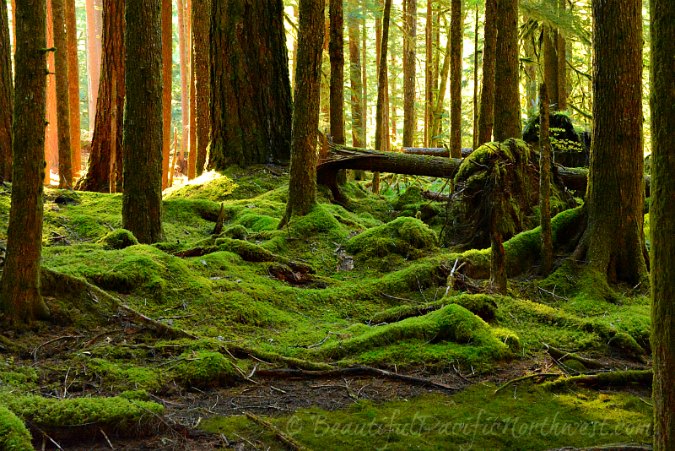
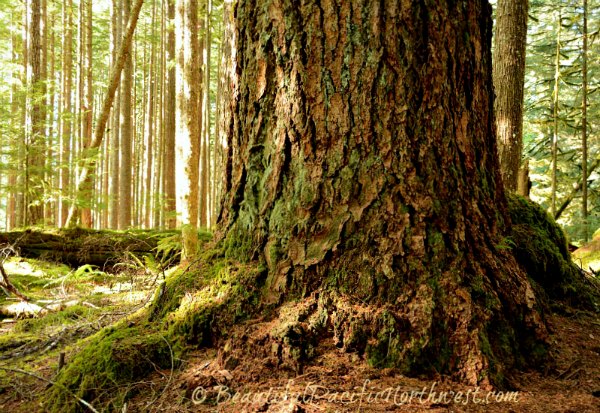
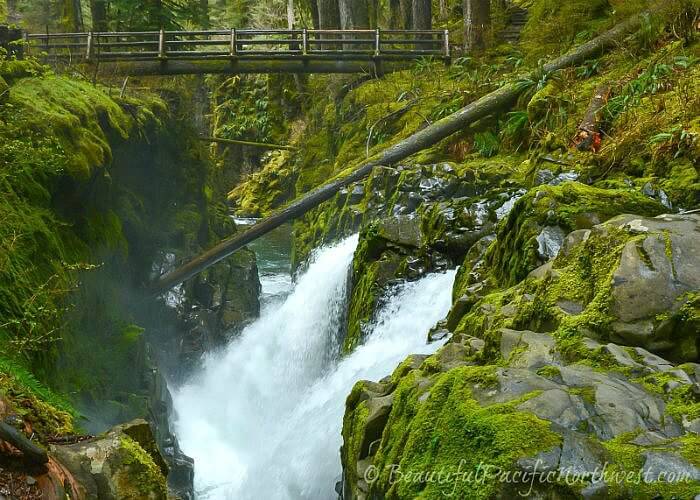
Click here to access the ONP Sol Duc Brochure.
See Section 4J starting at page 195 in Beautiful Olympic Peninsula Travel Guide for all the details about the Sol Duc Valley.
5) Shi Shi Beach
The fifth entry point is Shi Shi Beach. Get there through the Makah Reservation and the village of Neah Bay via Hwy 112 into Neah Bay. While the beach is within the boundaries of the Olympic National Park, the trailhead is still mostly inside the Makah reservation. (You'll need a Makah Recreation Pass to visit Shi Shi Beach.)
It takes intentionality to arrive at Shi Shi Beach. The beach is out of the way of other better known attractions. Plus, it is accessible by a 2-mile (3.22 km) long hike. But once there, the beach is dramatic and the shoreline is guarded by sea stack sentinels. We recommend! Don't forget to pack water and a lunch.
View many more photos at Shi Shi Beach.
Click here to access the ONP Shi Shi Beach brochure.
See Section 4G, pages 171-173 in Beautiful Olympic Peninsula Travel Guide for Shi Shi Beach details.
6) Ozette Lake
The sixth entry point leads to Ozette Lake and the Triangle Trail. Ozette Lake is accessed via Hwy 112 and Hoko Ozette Road.
Ozette Lake Activities:
- Boating and fishing at Ozette Lake
- Camp at Lake Ozette Campground
- Hike the popular "Triangle Trail," a 9-mile loop from the Ozette Ranger Station, to Sand Point, to Cape Alava, and back.
- You’ll experience rain forests, cedar swamps and a stretch of scenic beach hiking. Overland trails are available during high tide. See petroglyphs (if you can find them), bald eagles, and sea birds galore.
- We encountered a bear sow and 2 cubs on the beach during a recent hike.
Click here to access the ONP Ozette Lake Brochure
See Section 4G, pages 161-162 in Beautiful Olympic Peninsula Travel Guide for more details about Ozette Lake.
7) ONP Beaches near La Push, WA
La Push, WA, is on the Quileute Indian Reservation. First Beach is at the end of La Push Road and not part of ONP, but the Quileute tribe welcomes your visit.
But three other nearby beaches serve as the seventh point of entry into the Olympic National Park:
- Rialto Beach is just north of the Quillayute River. Enjoy views of seastacks and a 2-mile hike to tidepools and the "Hole in the Wall."
- Second Beach requires a very short hike. This is another very scenic crescent beach with white sand and plenty of drift wood.
- Third Beach requires a half-hour hike to reach the shore. The surf has battered the rocky shore but there are dozens of spiked sea stacks out a ways from the shoreline.
See more info about all the Olympic National Park Beaches here.
Photos of Rialto Beach here
Click here to access the ONP Mora Area brochure
Click here to access the ONP Mora and Rialto Beach Brochure
Beautiful Olympic Peninsula Travel Guide, section 4L, starting on page 220, contains details about the ONP beaches around La Push WA.
8) Hoh Rain Forest
The eighth entry point is Upper Hoh Road, which takes you to the Hoh Rain Forest Visitor Center.
The Hoh Visitor Center is 31 miles (50 km) from downtown Forks, and 87.5 miles (141 km) from downtown Port Angeles. Here is where you can explore a temperate rain forest on 3 trails, 4 if you count the 17-mile-long (27.36 km) Hoh River Trail.
Step back in time a few thousand years. You might almost expect a dinosaur to peak through the curtains of moss. It is clear to see why the Hoh Rainforest is a favorite day-trip for those visiting Port Angeles or the Olympic National Park. If it just happens to be raining, it is this rain that is responsible for the amazingly lush biome. Be prepared with a raincoat or umbrella.
Hoh Rain Forest Activities:
- See exhibits in the Hoh Rain Forest Visitor Center. Informative rangers are happy to answer your questions.
- Very short 0.1 mile (km) trail takes you through verdant rain forest within earshot of the Hoh Visitor Center, and is easy to traverse.
- Hike the dramatic Hall of Mosses loop, or the longer Spruce Nature Trail which takes you to the edge of the Hoh River. There is a chance you might encounter the local Roosevelt Elk herd.
- If hiking is your thing, go for the Hoh River Trail, which offers 17.3 miles of hiking one way. Your destination, Glacier Meadows, is beyond beautiful, and you can hike even farther, to the Blue Glacier on the face of Mount Olympus.
Details about the Hoh Rainforest are here.
See our Hoh Rain Forest photos.
More about rainfall averages and wildlife in Olympic National Park Rainforest here.
Click here to access the ONP Hoh Rain Forest brochure
Beautiful Olympic Peninsula Travel Guide, section 4M starting at page 226, gives details on the Hoh Rain Forest.
9) Kalaloch Beaches
Kalaloch Beaches via Hwy 101 - Ruby Beach, Beach 4, Beach 3, Kalaloch Beach, Beach 2, Beach 1, and South Beach Campground.
The Kalaloch beaches are the southernmost beaches of the Olympic National Park. From Ruby Beach to South Beach, Kalaloch offers seven beautiful access points to the same 15-mile-long crescent beach.
Camping is permitted at the Kalaloch Beach Campground, and at the South Beach Campground. Find more Camping opportunities within the Olympic National Park.
Beaches of the Olympic Peninsula coastline
Click here to access the ONP Kalaloch Beaches brochure
Beautiful Olympic Peninsula Travel Guide, section 4N, starting at page 236, gives all the details about each of the Kalaloch beaches.
10) Queets Rain Forest
The Queets Rainforest provides visitors with a taste of the wild as it existed for millennia. Yes, there are roads - they are dirt. The massive Queets River drains the high country as it has forever. Bear, elk, and deer roam at will. Salmon spawn in season. And the moss-cloaked evergreens continue to stab the skies, interrupted from time to time by the cries of eagles.
A landslide wiped out the Queets River Road bridge a few years ago, and this bridge has not yet been replaced. There is now a Lower Queets Road and an Upper Queets Road. The ONP Queets area brochure (below) shows you how to access each road, as does Beautiful Olympic Peninsula Travel Guide (also below).
More about rainfall averages and wildlife in Olympic National Park Rainforest here.
Click here to access the ONP Queets Rain Forest brochure
Beautiful Olympic Peninsula Travel Guide, Section 4O, starting at page 245, has all the details about the mysterious Queets Rain Forest.
11) Quinault Rain Forest
The "Valley of the Rain Forest Giants" is located within the Quinault Rain Forest. Supported by over 12 feet of rain per year (bring rain gear!), be amazed by enormous Sitka Spruce, cedars, hemlocks, and Douglas Firs, all towering 250 feet in the air, or more. Lake Quinault Lodge sits on the edge of the water amidst the giant trees where you will find tranquility as well as adventure.
More about rainfall averages and wildlife in Olympic National Park Rainforest here.
Click here for the Quinault area brochure.
See Section 4P, starting with page 250 in Beautiful Olympic Peninsula Travel Guide for additional information about the Quinault Rain Forest.
12) Staircase Trail and Staircase Ranger Station
Staircase area of Olympic National Park is one of only two areas in the eastern part of the Park, both of which are accessible from the Hood Canal. At Hoodsport, take Hwy 119 inland past Lake Cushman to Staircase.
Staircase is open year around, however bad weather may close the road from time to time. Check current road conditions before setting out.
Click here for the ONP Staircase area brochure
Beautiful Olympic Peninsula Travel Guide, section 4V, starting at page 323, provides more info about visiting the Staircase area of Olympic National Park.
13) Dosewallips Valley
Dosewallips Road more or less follows the Dosewallips River upward and inward into the Olympic National Park. From your base camp at the Dosewallips campground and Ranger station, you have access to miles and miles of serious high country trails.
However, Dosewallips Road washed out a few years ago. Today if you wish to enter the park this way, you'll have to park where the road ends and hike in.
Click here for the ONP Dosewallips Brochure
14) Deer Park
Deer Park Road leads to the Deer Park Campground and the very top of Blue Mountain. Flett's violet and Piper's bellflower bloom at the higher reaches of Blue Mountain. These endemic flowers are only found on the Olympic Peninsula. The views south into the Olympic Mountains and north across the Strait of Juan de Fuca are breathtaking.
If you like, you'll find the trailheads for several lengthy hikes. They're all easy because they're all downhill...until you need to hike back UP to your parked vehicle at Deer Park near the peak of Blue Mountain.
Click here for the ONP Deer Park Area Brochure
Beautiful Olympic Peninsula Travel Guide, section 4C, starting at page 99, provides more info about visiting the Deer Park area of Olympic National Park.
But Wait, There Really Is More: Miles and Miles of Hiking Trails
In addition to the 14 entry points into the Olympic National Park, there are a myriad of hiking trails that criss-cross both the ONP and the Olympic National Forest and wildernesses. I counted up to ten additional trail systems that originate outside the ONP but that lead ever upward into the high reaches of the Olympic National Park.
The Olympic National Park is criss-crossed with hiking trails. You'll also find camping areas in the remote back-hills and mountain slopes. You'll need a wilderness permit, bear canisters and camping gear for these extensive trail systems. The beauty is pristine and the trails far less traveled.
The Olympic National Park protects the finest features of the Olympic Peninsula in order to preserve them for the enjoyment and education of future generations.
Why we think the Olympic National Park is a Must-See, Bucket-List Destination
Olympic National Park Website - Basic Information
If Olympic National Park Campgrounds are full, check into nearby Olympic Peninsula Campgrounds.
Reference:
